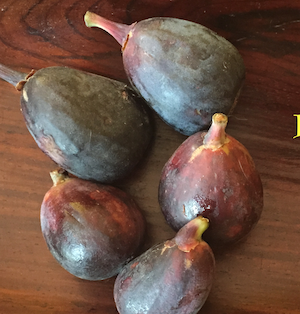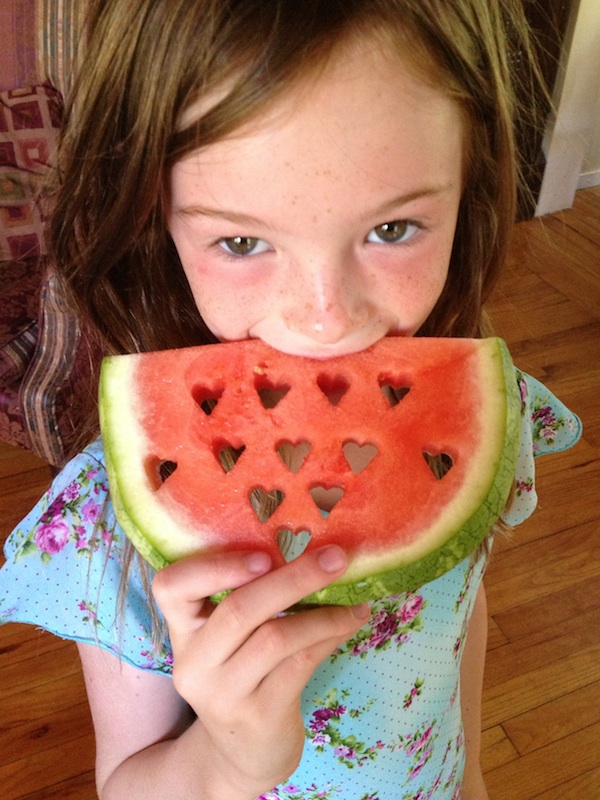Are you trying to eat more fruits and vegetables to ensure you get your vitamins and minerals? Trying to minimize your food waste by cooking those greens and refraining from peeling many of those fruits and vegetables you consume?
From russet potatoes and beets, to pears and kiwis, there is a lot of nutrition in the skins of fruits and vegetables. Colorful peels are concentrated sources of beneficial phytochemicals, yet, too often, we peel away all that nutrition and toss it in the garbage or compost bin. And, the same is true for the greens.
Go ahead and eat them, your body will thank you.
Skin is In (and so are leaves)
“So many home cooks still don’t understand that the skins and greens of fruits and vegetables are edible and very nutritious,” says Robert Schueller, Director of Public Relations at Melissa’s Produce. The problem, according to Schueller, is tradition: “Our eating traditions are handed down to us from our parents. If our parents removed the skin from a kiwi before eating it, or peeled a carrot before steaming, chances are you do the same.”
Schueller reminds us that our grandparents used to cook with the leaves and greens, mainly to be frugal, but at some point, they were being removed before being placed on the store shelves.” He adds, “Today, shoppers who pay for produce by the pound, find it silly to pay for the extra weight. As a result, knowing what to do with the green tops is becoming a dying art.”
But, there are indications that this ‘dying art’ of eating skins and greens is once again becoming commonplace. Perhaps fueled by eco-awareness more than frugality, the practice of mindlessly tossing away of produce scraps, cuttings and trimmings could become a thing of the past. We are now experiencing a return to a lifestyle that realizes the true potential of eating everything from root to stem, understanding that not only our bodies will benefit from the extra nutrition, but our pocketbooks will certainly benefit, as will the environment.
Don’t know where to start? Well, Schueller provides Family Eats with some insight — and inspiration — on enjoying the skins and leaves of some of our favorite fruits and vegetables.
Fruits
Go beyond apples, pears and begin eating the skin of many fruits and vegetables — it is a great way to grab extra nutrients.
The skin of any kind of citrus – orange, lemon, Buddah’s hand — can be used in baking (as long as you wash it off). In fact, there are more over 60 different types of flavonoids (plant compounds that are known to exhibit antioxidant properties in humans), in citrus. Many of these flavonoids have their highest concentrations within the peel. As an example, 1 tablespoon of lemon peel contains double the amount of vitamin C and triple the amount of fiber than 1 wedge of lemon without the peel, according to the USDA database.
 For those who peel their figs (really, some folks do), go ahead and eat it all. Figs can be enjoyed just as they are, or prepared and cooked. They make an excellent addition to cheese platters and a welcome addition to salads with spicy greens. They are wonderful for homemade jams and preserves as well as cakes and muffins. Stuff figs with cheese or ham, or slice and include in grilled cheese sandwiches. Dip in chocolate for a luscious treat.
For those who peel their figs (really, some folks do), go ahead and eat it all. Figs can be enjoyed just as they are, or prepared and cooked. They make an excellent addition to cheese platters and a welcome addition to salads with spicy greens. They are wonderful for homemade jams and preserves as well as cakes and muffins. Stuff figs with cheese or ham, or slice and include in grilled cheese sandwiches. Dip in chocolate for a luscious treat.
Kiwis have more Vitamin C than citrus, and they are even more nutritious when you eat the skins. The rest of the world eats kiwi skins, so go ahead and try them. You can eat kiwis whole, or sliced up without peeling. Kiwis can also be used in marinades as a meat tenderizer. But, if you don’t like the skin, you can peel it and then save the skin to be blended into smoothies.
The Kumquat is completely edible. In fact, many chefs only like using the skin because the inside is very tart (Kids will like it because it tastes like sour candy, adds Schueller).
Most people like to peel the skins of persimmins, but the skin is entirely edible, especially the Hachiya variety, which is large and round with a pointy base. When ripe, the Hachiya is soft, creamy and tangy-sweet.
Ninety-eight percent of watermelon eaters only enjoy for the fruit and discard the rind. But in the south, they love to pickle the rind, which can be used in chicken salad, mixed greens, or instead of cucumber in a summer gazpacho or stir fry. Try juicing it or add it to smoothies. The rind is higher in potassium and dietary fiber than the flesh, and also contains citrulline which is an amino acid that is converted to arginine in the body (increasing blood flow and improving overall cardiovascular health).
While mango skin is edible, please note that it can cause an allergic reaction in some people. People who are sensitive to poison ivy and oak may also be sensitive to the urushiol in mangoes and should avoid eating the skin.
The seeds of the world’s largest tree fruit, the jack fruit, are completely edible. Simply boil for 20-30 minutes and enjoy! Chefs are also separating the fibers in the jack fruit, cooking the fibers and then using them as a vegan, pulled pork substitute. Keep in mind you can’t eat the core (which is sticky) or the skin.
Vegetables
A baby artichoke is completely edible after it is cooked. Baby artichokes make a delicious appetizer when simmered in olive oil at a low temperature, then fried at a higher heat so their leaves open, and then sprinkled with fresh lemon juice. Enjoy Baby Artichokes sliced in half then braised in olive oil, white wine, garlic and herbs or serve with risotto.
When the beans are very young and tender, fava beans may be eaten whole.
Beet greens are one of the five most nutritionally dense veggies available to us in the U.S., and is often considered as one of the 50 best plants on the planet.
Cactus leaves, ranging in color from pale to dark green, are generally diced or cut into small pieces or strips (called Nopalitos). Simmered in water until tender, Cactus Leaves can be added to a variety of dishes including salads and eggs.
 Celery . . . Use it all! Chef’s have used the celery leaf for presentation, but the inner middle light yellow area is so tender and less crisp, that it is used in salads and stews. In fact, you can use every bit of the celery — yes, the stem can be cut off and used to create a stock, remove when finished.
Celery . . . Use it all! Chef’s have used the celery leaf for presentation, but the inner middle light yellow area is so tender and less crisp, that it is used in salads and stews. In fact, you can use every bit of the celery — yes, the stem can be cut off and used to create a stock, remove when finished.
Did you know that the peel of the onion is just dried onion? Skip peeling and tossing them out. Simply place it in a bag and store in fridge for up to two weeks. Rehydrate the onion in a soup or a stew.
Celery Root is a very sustainable crop, both the bulb and root are edible. Although the stems and/or leaves are edible, they are often removed before reaching the market.
For those who don’t already do this, the skin of a cucumber is completely edible – as are potato skins! The skin on 2 varieties winter squash (delicata and butternut) are completely edible.
Add snow peas, sugar snap peas, squash blossoms, and broccoli leaves to the long list of edible skins and leaves — the culinary possibilities are endless.
Start a new tradition in your kitchen by reintroducing the skins and leaves of produce into your daily meals, your taste buds will thank you.
Many thanks to Robert Schueller of Melissa’s for providing Family Eats with a lot of great information. Head on over to Melissa’s website and learn more about produce, along with great-tasting recipes.
Save
Save
Save
Save
Save








